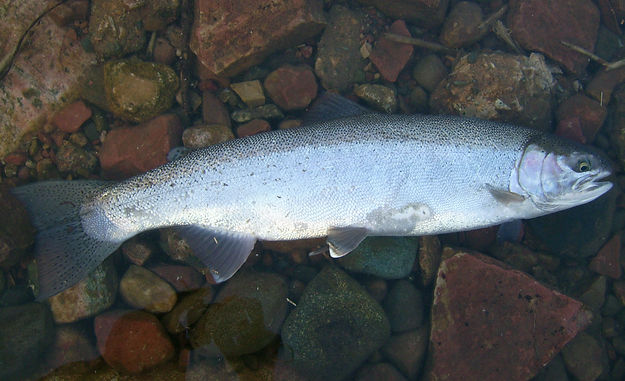
Steelhead
LOCATION
BODIES OF WATER
Steelhead, known for their acrobatic leaps and powerful runs, can be found in various bodies of water across the Southwest region of the United States. Anglers are drawn to these waters in pursuit of the elusive steelhead, which offers a thrilling and challenging fishing experience. Here are some popular locations for steelhead fishing in each state:
Arizona: While steelhead are not native to Arizona, anglers can find opportunities to catch steelhead in the Colorado River below Glen Canyon Dam. The cooler water released from the depths of Lake Powell creates a suitable environment for these migratory fish.
California: The rivers and streams along the North Coast of California, such as the Smith River, Klamath River, and Eel River, provide excellent steelhead fishing opportunities. The Feather River and American River are also popular destinations, particularly during the winter steelhead runs.
Nevada: Nevada is not known for its steelhead fisheries.
New Mexico: New Mexico is not known for its steelhead fisheries.
STRUCTURE/HABITAT
Steelhead are anadromous fish, meaning they migrate between freshwater and the ocean. They spend most of their lives in the ocean but return to freshwater to spawn. When in freshwater, they seek out deep pools, runs, and riffles with moderate to fast currents. They are often found near submerged structures, such as rocks, logs, and undercut banks. Steelhead require well-oxygenated water and are more active during cooler temperatures.
PATTERNS
FALL/EARLY WINTER
During the fall and early winter, steelhead begin their migration from the ocean to freshwater. They move upstream in search of suitable spawning grounds. Anglers often target them in the lower sections of rivers, where they are more accessible. Fishing with drifting or swinging flies, spoons, and jigs can be effective during this time.
WINTER
In the winter months, steelhead continue their migration and can be found in the middle to upper sections of rivers. They are more active during periods of higher water flows. Fishing with larger flies, such as streamers or egg patterns, and using techniques like nymphing or swinging can yield success.
SPRING
As spring arrives, steelhead may still be present in some rivers, particularly in the upper reaches. However, they begin to transition back to the ocean. Fishing with smaller flies, such as nymphs or wet flies, and focusing on slower water near the river's mouth can be productive during this time.
Bait
Steelhead can be targeted using various bait options, including flies, lures, and natural baits. Fly fishing with patterns such as nymphs, streamers, or egg imitations is a popular technique. Spoons, spinners, and jigs can also be effective, particularly when fishing in faster currents. Natural baits like salmon eggs, nightcrawlers, or shrimp can be used as well.
